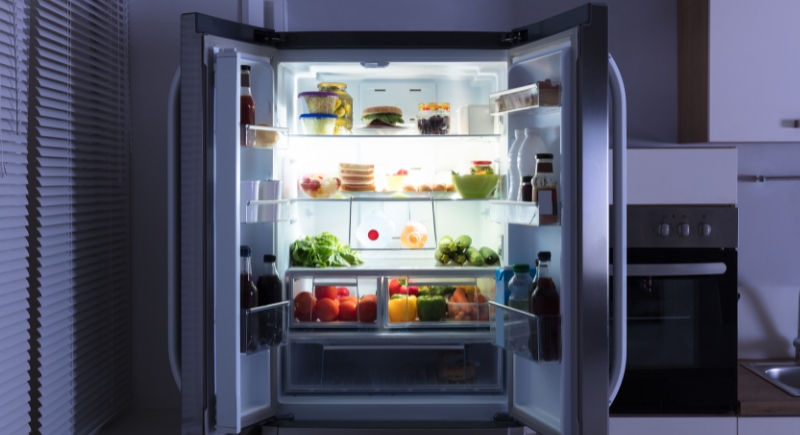The One Place in Your Fridge You Should Never Store Milk
Studies on milk preservation show that even small temperature changes can cause it to spoil days earlier than expected. Research from dairy science journals and food safety labs confirms that milk’s freshness depends less on the date printed on the carton—although still an important factor—and more on where it sits in your refrigerator. Areas that fluctuate in temperature allow bacteria to multiply and alter the milk’s chemical makeup, which leads to sourness and curdling even before the expiration date.
Despite this, many households still store milk in the same unreliable spot, one that regularly warms up each time the fridge door opens. It feels convenient, but science says it’s the worst place possible for keeping milk fresh.
The Warmest Spot in the Fridge

Image via Getty Images/AndreyPopov
Most people slide their milk right into the refrigerator door, which seems like the perfect fit because it’s easy to grab and has plenty of space for tall cartons. However, temperature readings inside modern fridges show that the door is the warmest area.
Every time you swing it open, a burst of room-temperature air hits everything stored there. Those small spikes cause bacteria to grow faster and the milk to sour sooner. Experts recommend moving milk to the colder sections of the refrigerator, especially the back of a middle or bottom shelf.
These zones maintain a steady chill, usually around 37°F (3°C), which slows bacterial activity and keeps the milk’s flavor stable. The back of the fridge is also less affected by frequent door openings.
Why Temperature Consistency Matters
Dairy research has long shown that milk’s shelf life depends on stable cold storage. In one controlled study, milk stored at 2°C had significantly less bacterial growth after four days than milk kept at 4°C.
Another experiment found that even pasteurized milk deteriorates rapidly when exposed to higher temperatures, with acidity and spoilage indicators appearing much sooner.
At home, fridges often vary by a few degrees from shelf to shelf, and the door can jump above 40°F several times a day. The fluctuation speeds up spoilage, even when the overall fridge temperature seems correct. Keeping milk near the back, where the temperature remains more constant, can extend its freshness by several days and reduce waste.
Better Habits for Keeping Milk Fresh

Image via Getty Images/awe
Small changes in how milk is handled make a big difference. Keep it sealed tightly to prevent air and moisture from seeping in, and avoid leaving it out on the counter while cooking or eating. When grocery shopping, pick up milk at the end so it spends less time in warmer air.
If you buy milk in bulk or use it infrequently, freezing is a practical option. Milk can stay frozen for up to six months in a freezer-safe container, though it should be thawed in the refrigerator instead of on the counter. Once thawed, shake it well to recombine any separated fat before using it within three days.
The fridge door is better suited for items that can handle temperature swings. Condiments, sauces, fruit juices, and soft drinks do fine there because they don’t spoil quickly. However, storing milk, yogurt, or cream at the door leads to faster spoilage. Keeping dairy in the colder center shelves will save you money, preserve taste, and prevent unnecessary waste.